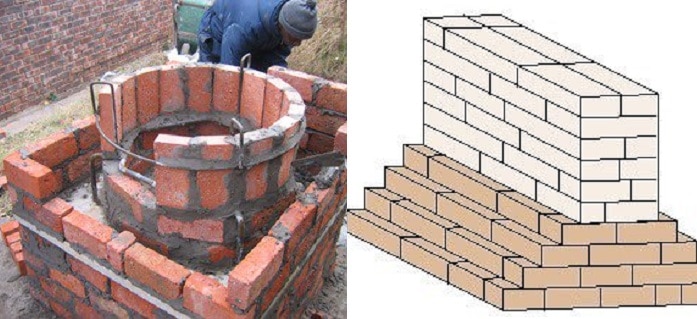Brick Masonry Terms and Definitions
Brick Masonry Terms and Definitions
Course
A course is a horizontal layer of bricks or stones.
Bed
It is the surface of stone perpendicular to the line of pressure. It indicates the lower surface of bricks or stones in each course.
Back
The inner surface of a wall which is not exposed is called the back. The material forming the back is known as backing.
Face
The exterior of wall exposed to weather is known as face. The material used in the face of the wall is known as facing.
Hearting
It is the interior portion of a wall between the facing and backing.
Side
It is the surface forming the boundary of bricks or stones in a direction transverse to the face and bed.
Joint
It is the junction of two or more bricks or stones. If the joint is parallel to the bed of bricks or stones in a course then it is termed as bed joint. The joint which are perpendicular to the bed joints are termed as vertical joints or side joints or simply joints.

Header
It is a brick or stone which lies with its greatest length at right angles to the face of the work.. in case of stone masonry header is sometimes known as through stone. The course of brick work in which all the bricks are laid as headers is known as header course.
Stretcher
It is a brick or a stone which lies with its longest side parallel to the face of the work. The course of brick work in which all the bricks are laid as stretchers is known as stretcher course.
Bond
This is the method of arranging bricks so that the individual units are tied together. Bonding is essential to eliminate continuous vertical joints both in body as well as on the face of wall.
Spalls
These are the chips of stones used for filling the interstices in stone masonry.
Quoins
These are the stones used for the corners of walls of a structure.
Bat
It is the portion of brick cut across the width.
Closer
It is the portion of the brick cut lengthwise in such a manner that its one long face remains uncut.
Queen closer
It is the portion of brick obtained by cutting a brick length wise into two portions.
King Closer
These are the portions of a brick obtained by cutting off the triangular piece between the center of one end and the center of one side.
Bevelled Closer
It is that portion of a brick in which the whole length of the brick is beveled for maintaining half width at one end and full width at the other.
Frog
It is an indentation or depression on the top face of a brick made with the object of forming a key for the mortars. This reduces the weight of the brick also.
Plinth
it is the horizontal course of stone or brick provided at the base of the wall above ground level. It indicates the height of the ground level above the natural ground level. It protects the building from dampness.
Plinth Course
It is the top most course of the plinth masonry.
String Course
It is a horizontal projecting course of masonry projecting out of the face of the wall for shedding rain water off the face. It imparts an aesthetic appearance to the structure and is generally provided at every floor level.
Sill
It is a horizontal member of stone, concrete or wood, employed for the purpose of shedding off rain water from the face of wall immediately below the window opening. It gives support to the vertical members of a wooden window frame.
Lintel
It is a horizontal member of stone, brick, wood, iron or RCC used to support the masonry or load above an opening.
Jambs
These are the vertical sides of an opening for doors and windows. These may be plain or splayed or may be provided with recesses to receive the frames of doors and windows.
Reveals
These are exposed vertical surfaces left on the sides of an opening after the door or window frame had been fitted in position
Cornice
It is a projecting ornamental course near the top of a building or at the junction of a wall and ceiling.
Blocking Course
It is atop most course of stone masonry provided immediately above the cornice to prevent the tendency of the cornice to overturn. It also adds to the aesthetics of the cornice.
Coping
It is a course placed upon the exposed top of an external wall to prevent the seepage of water.
Corbel
It is the extension of one or more course of stone or brick from the face of a wall to serve as a support for wall plates.
Template
Pieces of stones placed under the end of a beam to distribute the load over a greater area.
Comments